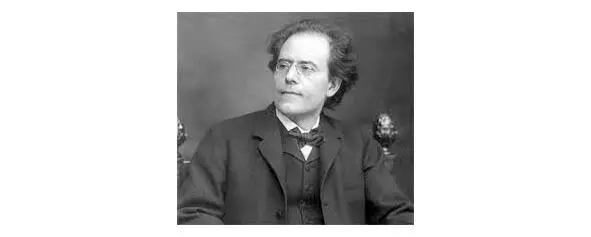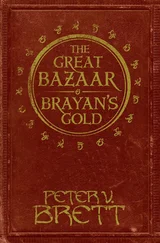4. Haydn’s personal favorite composition, Gott erhalte Franz den Kaiser (Emperor’s Hymn), has been used throughout history by famous composers such as Tchaikovsky, Czerny, Rossini, Paganini, Smetana, and many others and is currently used for the German national anthem.
5. Franz Joseph Haydn was affectionately called Papa Haydn by many people and for many reasons. The title originated from his care for his often mischievous orchestra musicians, who frequently needed saving from trouble while in the court of Prince Esterhazy. Mozart continued the torch and affectionately referred to him as Papa Haydn as well.
6. Another important layer to the Papa Haydn nickname comes from his reputation as the “Father of the Symphony” and the “Father of the String Quartet.” Haydn was not the inventor of the symphony or quartet, but rather is respected for perfecting them.
7. During an unexpectedly extended stint of summer concerts away from home, Haydn wrote his Farewell Symphony on behalf of his musicians. The final Adagio movement calls for each musician to stop playing at one point, blow out their candle, and leave the performance until only two players are left playing (Haydn and his Concertmaster in this case). The joke and message was received, as the next day Prince Esterhazy decided it was finally time for them all to return home.
8. After serving as Kapellmeister for the Esterhazy family for many years, Haydn left his position and went to London to study music from English composers and experience their larger orchestras. While there he wrote his final twelve symphonies and some of his best-known works.
9. In the late 1700s Beethoven attempted to study with Haydn, but Haydn was too preoccupied with his own works and travelling to give Beethoven his due attention. Upon Haydn’s second trip to London, Beethoven began studying with other teachers and lessons with the Papa Haydn never resumed. Beethoven famously recalled, “I learned nothing from Haydn.”
10. Haydn died in Vienna on May 31, 1809. Upon his death, phrenologists took his head from his grave and brought it back for study. After quite a series of extraordinary events, Haydn’s head made its way safely to the wonderful display in the Esterhazy estate where the rest of his body rests peacefully still to this day.

Franz Liszt (1811—1886)
1. Franz Liszt was born to Anna Liszt and Adam Liszt on October 22, 1811 in the village of Doborján in Sopron County, in the Kingdom of Hungary, Austrian Empire. Liszt’s father played the piano, violin, cello, and guitar. He had been in the service of Prince Nikolaus II Esterházy and personally knew Haydn, Hummel, and Beethoven.
2. Liszt’s early progress was astounding. By the age of nine, he had already mastered Ferdinand Ries’s excruciatingly difficult E flat major Piano Concerto .
3. Through Chopin’s friend, George Sand, Liszt met the Comtesse d’Agoult, who in 1835 left her husband and family to live with him. Three children were born of this liaison – Blandine, Cosima, and Daniel.
4. Between 1835 and 1843, Liszt concertized extensively in Vienna, Leipzig, Prague, and Dresden while continuing to compose. Apart from several fine pieces, most of these works were transcriptions and arrangements of compositions by others. In 1843, already separated from the countess, Liszt accepted an appointment at Weimar as Grand Ducal Director of Music Extraordinary.
5. In 1846 Liszt returned to Hungary, where he became interested in gypsy music and eventually incorporated some of their melodies in his Hungarian Rhapsodies. On a concert tour in Russia, he met the Princess Carolyne von Sayn-Wittgenstein, who eventually left her husband to marry him. Unable to obtain a divorce in Russia, the princess moved with Liszt to Villa Altenberg, a home they bought in Weimar in 1848.
6. Here Liszt settled down to compose, teach, and conduct. He wrote two piano concertos, the Todtentanz for piano and orchestra, and the symphonic poems Tasso, Les Préludes, Mazeppa, and Hunnenschlacht in addition to conducting the first performances of numerous works, including Wagner’s Lohengrin in 1850 at the Staatskappelle Weimar. Liszt’s daughter Cosima married the pianist and conductor Hans von Bülow in 1857. She later left him for Wagner, with whom she had three children before marrying him.
7. In 1871, Liszt was appointed Royal Hungarian Counselor and began the three-cornered journey to Rome, Weimar, and Budapest which became the pattern for the rest of his life. In 1873, the fiftieth anniversary of his career was celebrated at Budapest as a national occasion. In 1877, he participated in a concert in Vienna for the fiftieth anniversary of Ludwig van Beethoven’s death, just as he had contributed to the activities celebrating the centennials of Wolfgang Amadeus Mozart in 1856 and of Beethoven in 1870.
8. Liszt moved to Rome in 1861. Such was his devotion to the church, Pope Pius IX conferred on him the title of “Abbé” four years later. The rest of his life was dominated by a series of inspired sacred compositions, while his piano music became more calmly reflective and meditative in tone.
9. In 1881, Liszt’s seventieth birthday was celebrated in Rome with a concert of his own music. On May 22, 1883, Liszt gave a memorial concert for Wagner, who had died in February. Liszt gave his last concert on July 19, 1886. The extent of his tours and the number of his concerts defy the imagination.
10. Liszt died in Bayreuth on July 31, 1886 from dropsy complicated by pneumonia.

Gustav Mahler (1860—1911)
1. Mahler was born on July 7, 1860 in Kalischt, Bohemia, in what was then the Austro-Hungarian Empire and which is now located in an area which is part of the Czech Republic.
2. Mahler discovered a piano in his grandmother’s attic when he was six years old. Just four years later, he gave his first public performance.
3. Mahler graduated from the Vienna Conservatory in 1878. Sadly, few of his student compositions were preserved, so it is not clear what he may have sounded like at the time.
4. Following his tenure with the Leipzig Opera, Mahler moved to Prague in 1885 to take up a post with the Neues Deutsches Theater (New German Theatre) in Prague.
5. In 1897, Mahler became director of the Vienna Court Opera, a post he would go on to hold for ten years. It was a trying time for Mahler, who on more than one occasion had to prove his German cultural credentials to appease his employers. He did so with some storming concerts of Wagner.
6. Mahler met the father of psychoanalysis, Sigmund Freud, after a series of tragedies plagued Mahler’s already tragic life. Freud’s diagnosis for Mahler was mother-fixation.
7. Mahler wrote a song cycle on the death of children called Kindertotenlieder , which enraged his wife Alma Mahler. Sadly, not too long after, one of his two children passed away.
8. Mahler is known for creating the autobiographical symphony. He claimed, “a symphony should be the world, it must embrace everything.” His Symphony No. 3 is one of the longest symphonies ever created, clocking in at roughly 95 minutes. Composed between 1893 and 1896, it is still performed in symphony halls around the world to this day.
9. In 1907, Mahler was diagnosed with bacterial endocarditis, also known as infective endocarditis. It is an infection of the inner lining of the heart and at least one of the heart valves. He died just four years later.
Читать дальше














